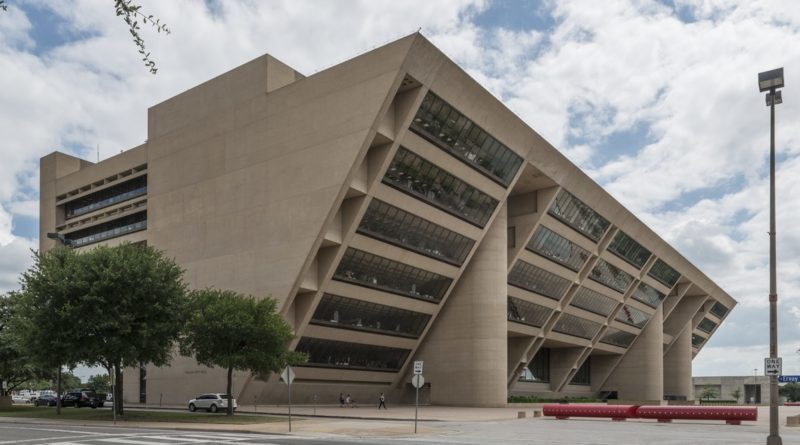Dallas Faces Massive Cuts Because of COVID-Related Downturn
As cases of the novel coronavirus continue to rise and more businesses are allowed to open, getting news that is important to your community will be even more imperative. But there’s also a lot of it, which can be overwhelming. Here are today’s bullet points.
- Dallas faces massive cuts because of COVID-related downturn
- Dallas County cases remain well above 200 a day
- Abbott announces funding for crisis counseling services
Dallas Faces Massive Cuts Because of COVID-Related Downturn
 The Dallas City Council was briefed Wednesday on the city’s economy – and got extremely troubling news. City staff projected a $25 million drop in sales tax revenue – with a total revenue drop of $33 million for the year. Franchise taxes and service charges are also taking a hit, too.
The Dallas City Council was briefed Wednesday on the city’s economy – and got extremely troubling news. City staff projected a $25 million drop in sales tax revenue – with a total revenue drop of $33 million for the year. Franchise taxes and service charges are also taking a hit, too.
Hotel occupancy taxes are taking a hit, and slowed air traffic at Love Field has the city forecasting a $40 million revenue drop, too.
Even 2021 property tax will likely be impacted.
The city has implemented a hiring freeze and has spending reductions planned, but there will still likely be a $24.4 million budget shortfall, and the funding from the federal government, so far, has been designated for COVID-19 related expenses only.
It means that some projects will be scuttled or postponed, and that the city will be looking at how it reduces services.
“We’re going to have to re-imagine the way we deliver services,” council member Jennifer Gates said. “It is going to be a tough budget process.”
To read more, check out Peter Simek’s report at D Magazine.
Dallas County Cases Remain Well Above 200 a Day
It’s been not quite a week since Dallas County passed the 200 cases per day mark, and there’s also been a slow uptick of hospitalizations to go along with it.
Of cases requiring hospitalization who reported employment, about 79% have been critical infrastructure workers including those in healthcare (18%), transportation (16%), food and agriculture – which includes grocery stores and places you can buy food (15%), public works (8%), finance (5%), communications (4%), teachers, real estate, and clergy (8%), and first responders (3%).
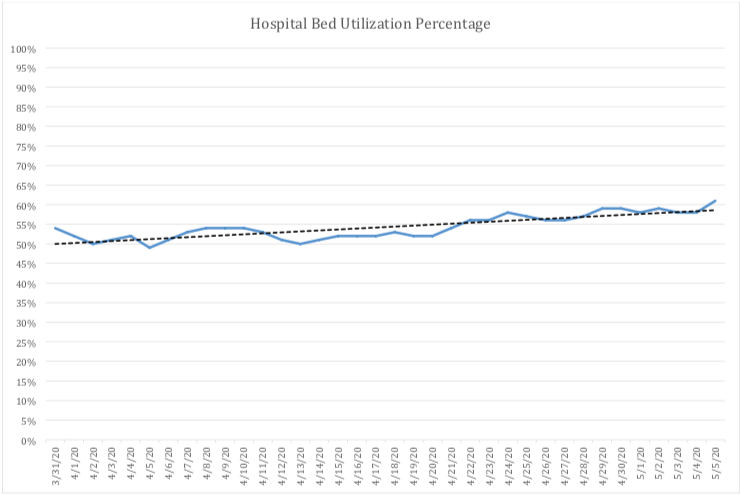
In his evening newsletter, Dallas Mayor Eric Johnson said that 25 hospitals reported their bed availability Wednesday. Of the 5,710 total beds, 61% are occupied – which is up slightly from the 58% we reported Sunday. Of the 827 ICU beds available, 64% (or 532) are occupied, compared to 505 last weekend. And 326 of the total 943 ventilators available are currently in use.
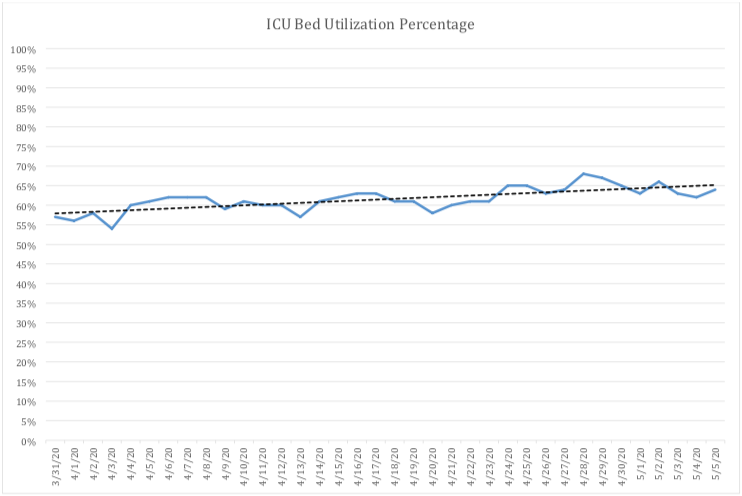
In the county’s May 5 aggregate report, most cases continue to be between the ages of 18 and 60, with the 18-40 age group accounting for 38% of the cases, and the 41-64 age group accounting for 43% of the total cases.
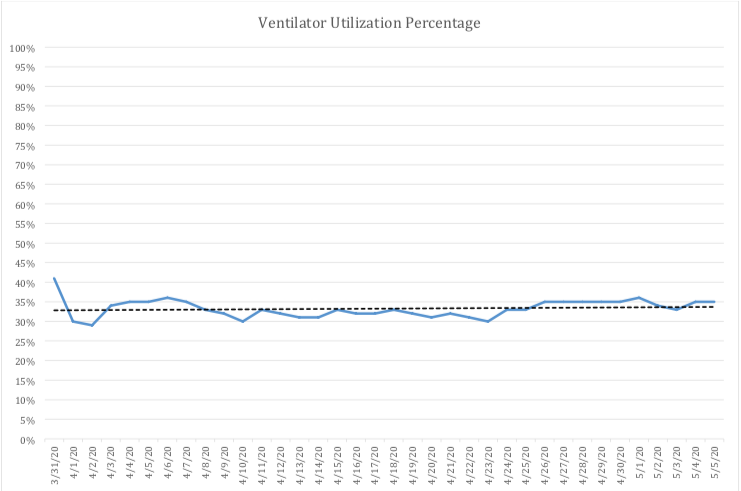
There were 2,450 men who were diagnosed with the novel coronavirus (or roughly 54%) and 2,064 women.
Close contact or community transmission continues to be the biggest risk factor for contracting COVID-19, accounting for roughly 82% of all cases. Living in a long-term care facility, being incarcerated in the county jail, and domestic travel are a distant second, third, and fourth, at 6.1%, 5.4%, and 2.6%, respectively.
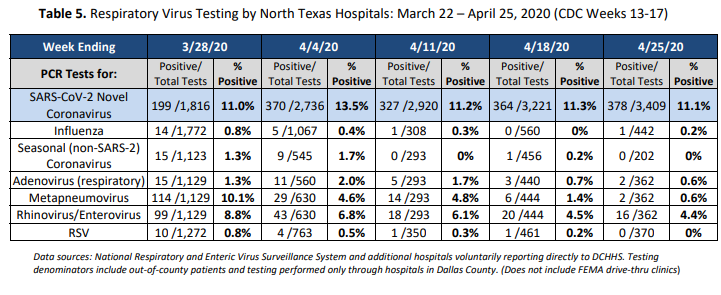
Of the testing done, positive cases accounted for 11.7% as of April 25, with 309 positives coming from 2,647 tests.
However, both Johnson and Jenkins have taken pains to point out that less than one percent of the county’s population is being tested.
Twenty-one percent of all cases ended up hospitalized – 30% ended up in critical care, and 19% ended up on a ventilator.
In a city-by-city breakdown, Dallas still comes in with the highest number of cases – 2,047, or 55.1%. Highland Park has 18 cases so far, and University Park has 25.
The county does not count recoveries because it’s not a variable being used nationally by the Centers for Disease Control and Prevention, nor by state health departments. However, one can extrapolate that the 76% of total cases that have not been hospitalized – at the very least – are on their way to recovery or have recovered, county officials explained recently.
“The exact number of patients who have been released from area hospitals to continue their recovery at home is not available at this time,” Lauren Trimble, Dallas County Judge Clay Jenkins’ chief of staff, said.
Abbott Announces Funding for Crisis Counseling Services
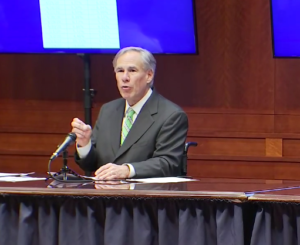 Gov. Greg Abbott announced that the Texas Health and Human Services Commission has received $5.8 million in federal funding to provide crisis counseling services to Texans who have been affected by the COVID-19 pandemic.
Gov. Greg Abbott announced that the Texas Health and Human Services Commission has received $5.8 million in federal funding to provide crisis counseling services to Texans who have been affected by the COVID-19 pandemic.
The funding is provided by the Federal Emergency Management Agency’s (FEMA) Immediate Services Crisis Counseling and Training Program.
“I thank our partners at FEMA for providing this important funding to help Texans across the state,” said Abbott. “As Texas continues to respond to the COVID-19 pandemic, we are working to provide Texans with access to the mental and emotional support resources they need.”
The grant allows 31 local mental health and behavioral health authorities to connect Texans to short-term crisis counseling services that include reducing stress and providing emotional support, assisting survivors in reviewing their disaster recovery options, promoting the use or development of healthy coping strategies, connecting survivors with appropriate people and agencies that can help them, and referrals to other disaster recovery programs.
Those authorities can also collaborate with schools, shelters, nursing homes, emergency responders, healthcare providers, as well as local, state, and federal partners to reach those in need. Crisis counseling teams will work with individuals, groups, and organizations to provide educational materials, information, crisis counseling services, and referrals to local resources to assist individual needs.
The grant is expected to help more than 260,000 people across the state. To learn about counseling services and programs, dial 2-1-1.

